After fueling back up with a delicious lunch at Zuem Stadtwappe in Place de la Cathedrale in Strasbourg, we decided to make another trip inside the Cathedral – there was more that we wanted to see. My friends and I were enjoying an afternoon in La Petite France as part of our Viking River Cruise that we took in 2014.
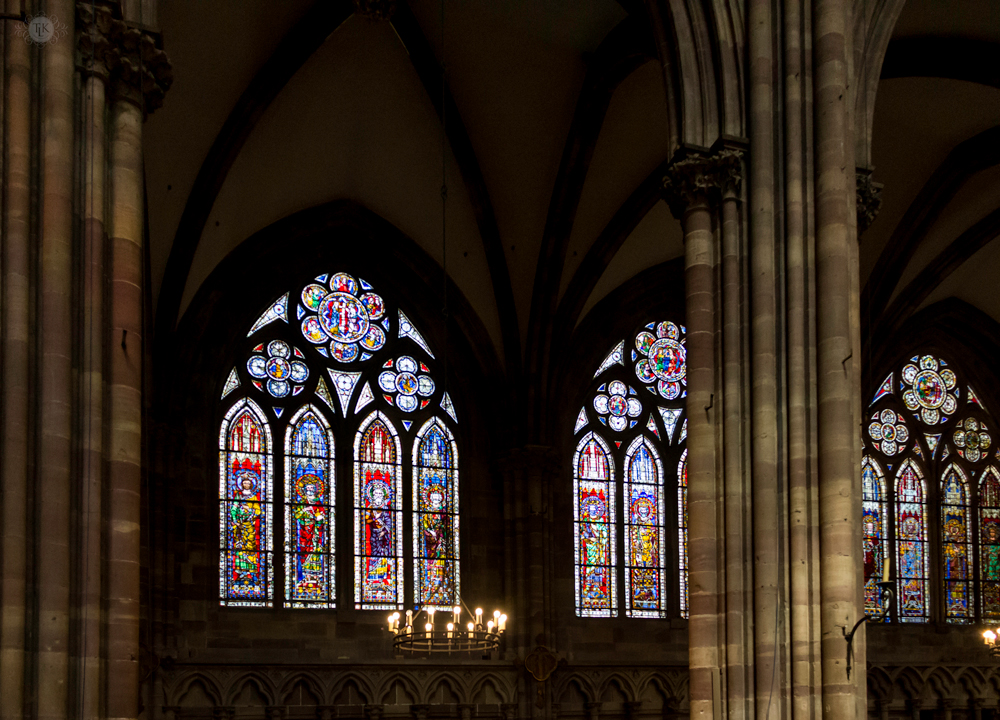
The Cathedral has beautiful stained glass windows and we really were amazed at how they were spared during World War II by Hitler and the Monuments Men. Hitler admired the windows and had them removed and placed in Salt Mines nearby and then after the War, they were returned to the Cathedral. The things that are taken for granted during times or war – so much of this part of Europe was damaged and has been rebuilt. This was one less thing to worry about so to speak. And it truly is amazing when you are inside a place like this with the sun shining brightly outside. The colors bring the dark church to life.
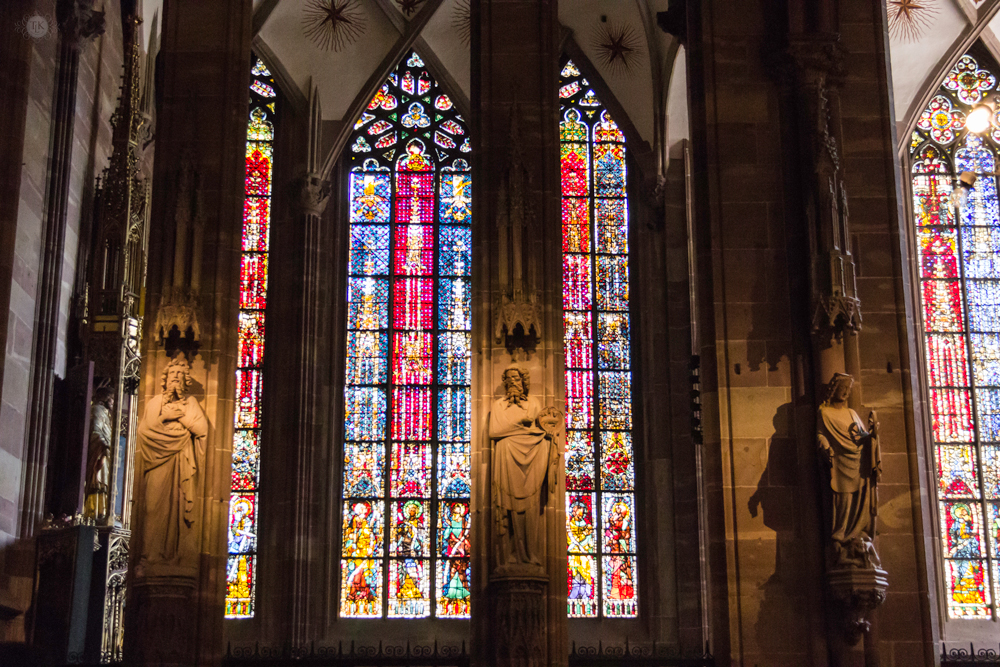
There are also lots of statues inside the church, just like on the facade outside. Most of these are Saints and there was also an Angel Pillar with carved angels all around.

Pillar of Angels – image courtesy Wikipedia
This was built around 1230 and has twelve sculptures – four each on three levels. Considering the Cathedral dates to 1220, these were put in place relatively early on.
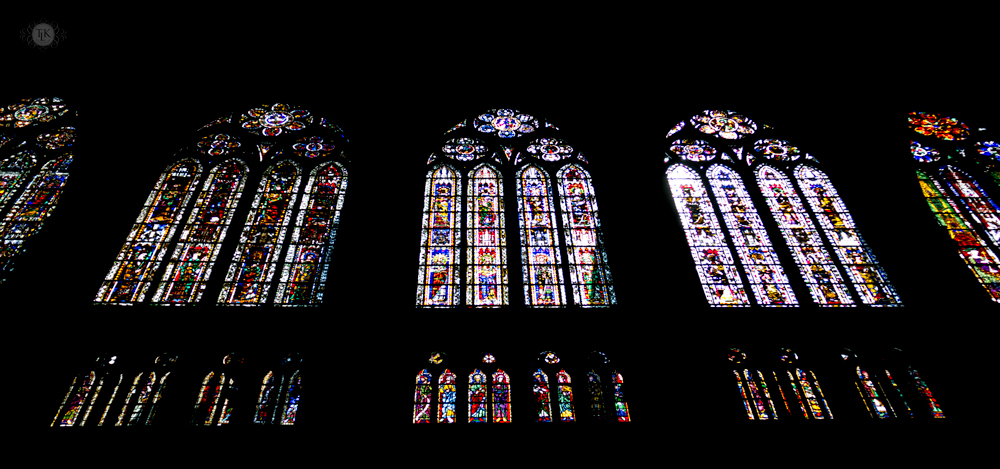
The many different images on the stained glass were probably like the many sculptures on the facade and inside. They represented stories from the Bible or historical figures and saints.
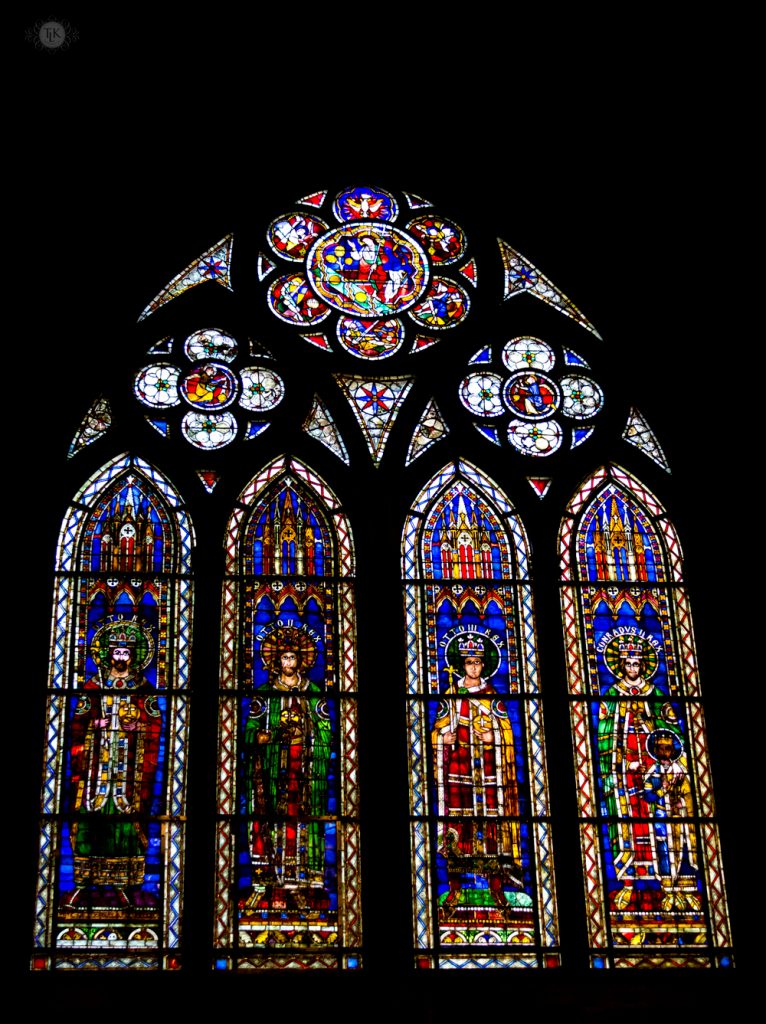
There were probably monarchs represented right along with the Saints.
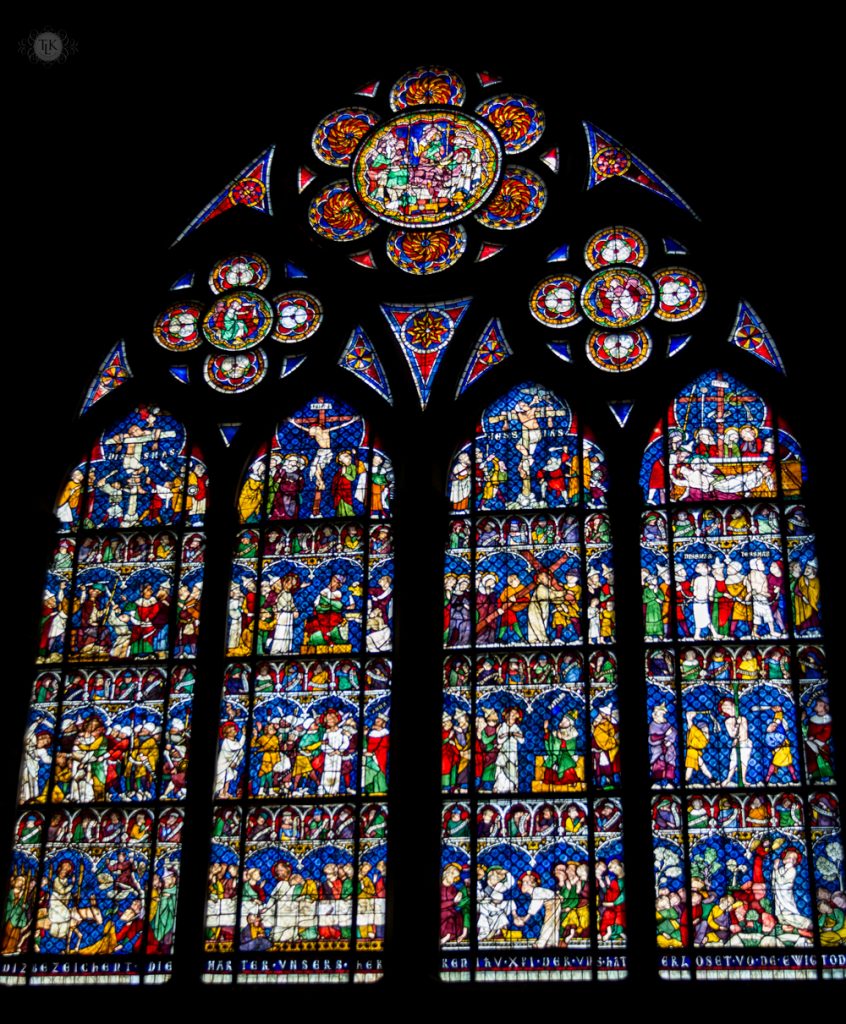
And I am sure there were quite a few stories represented here. These panels probably represented more of the Passion of Christ, like the tympanum on the main portal outside.
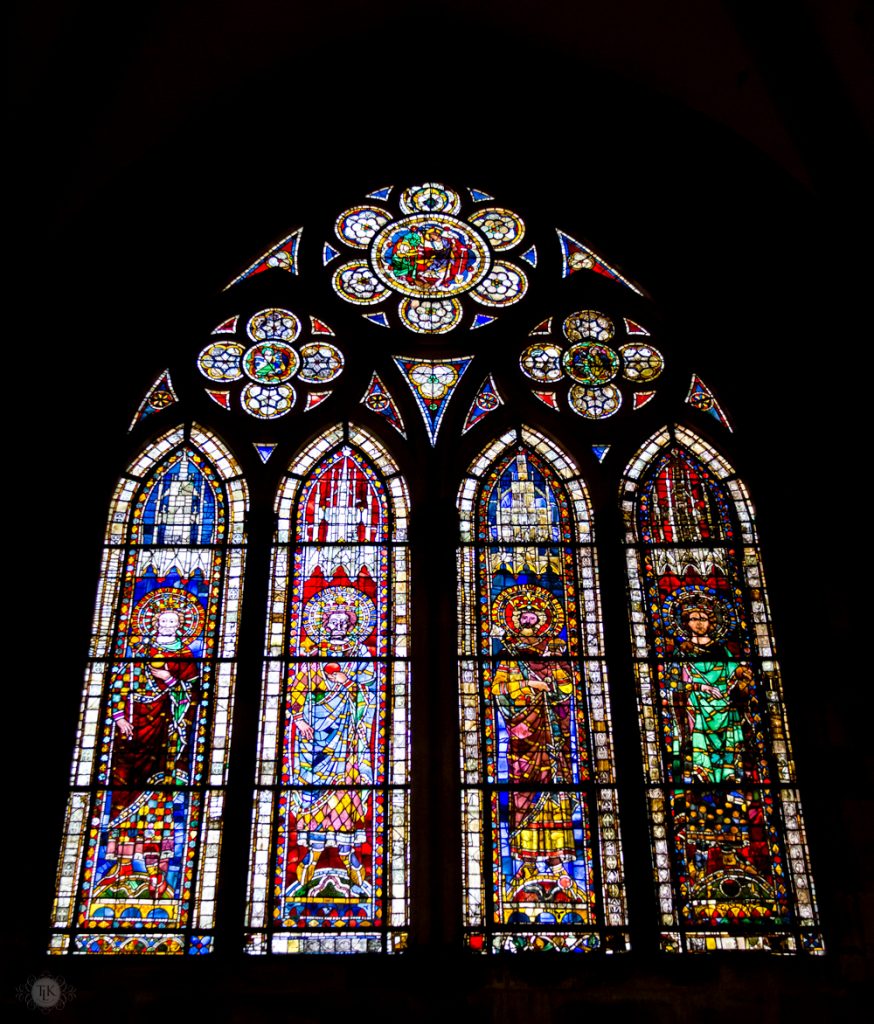
The windows were definitely works of art!
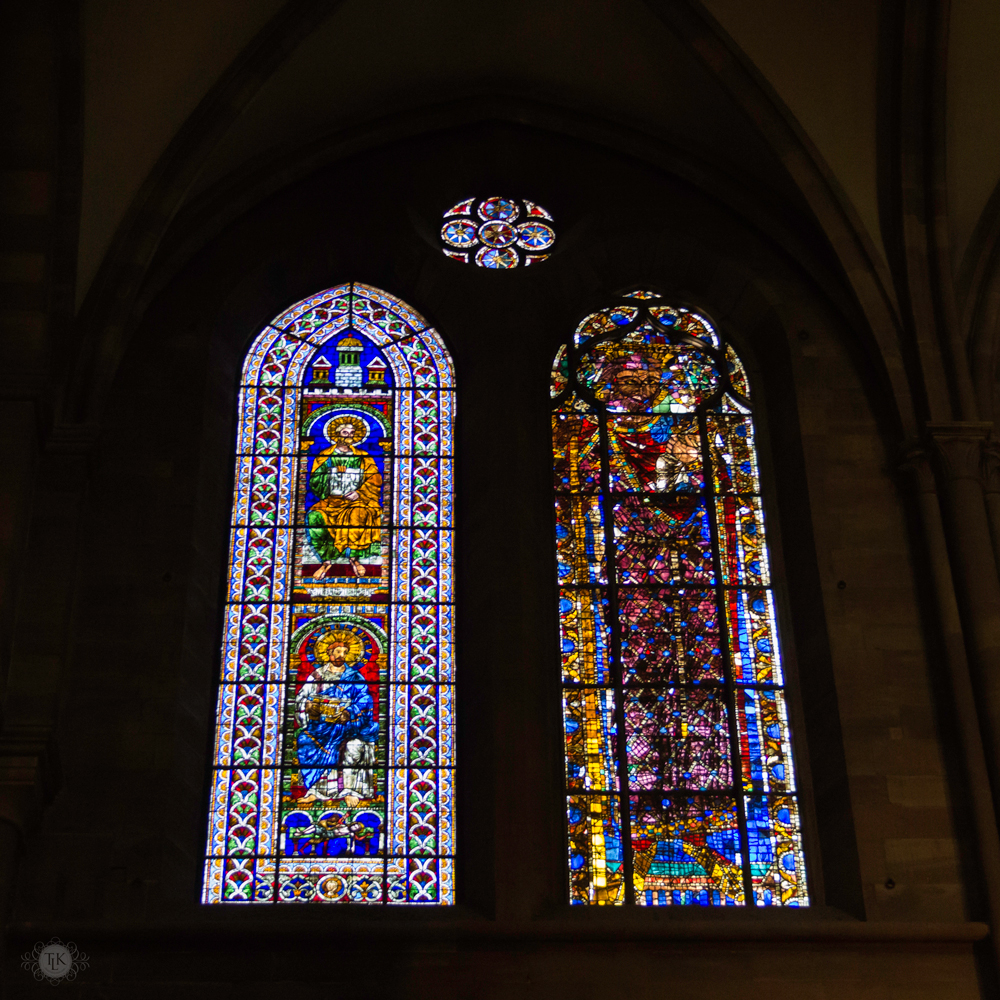
And with so many different styles. These two windows side by side are totally different in style.
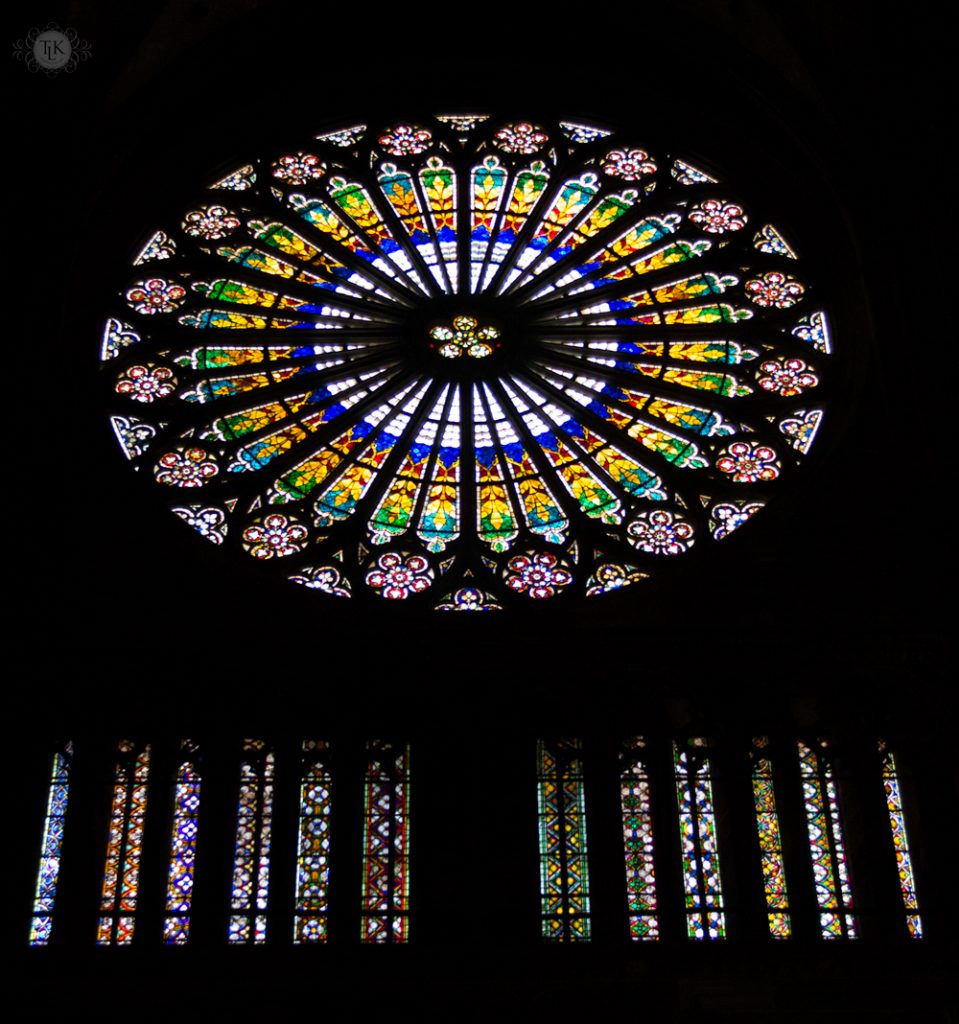
But the main attraction for us was still Erwin’s Rose.
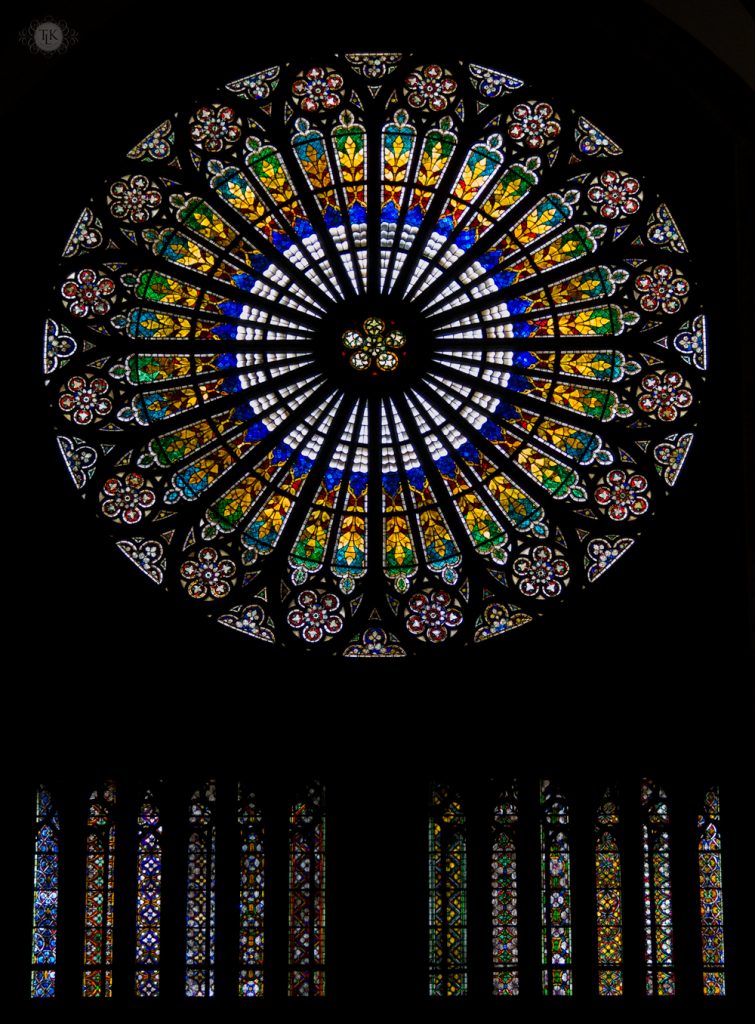
The architect of the Cathedral, Erwin de Steinbach designed this beautiful window to illuminate the inside. I could have spent hours looking at all of the stained glass, but we had other parts of the church we wanted to see.
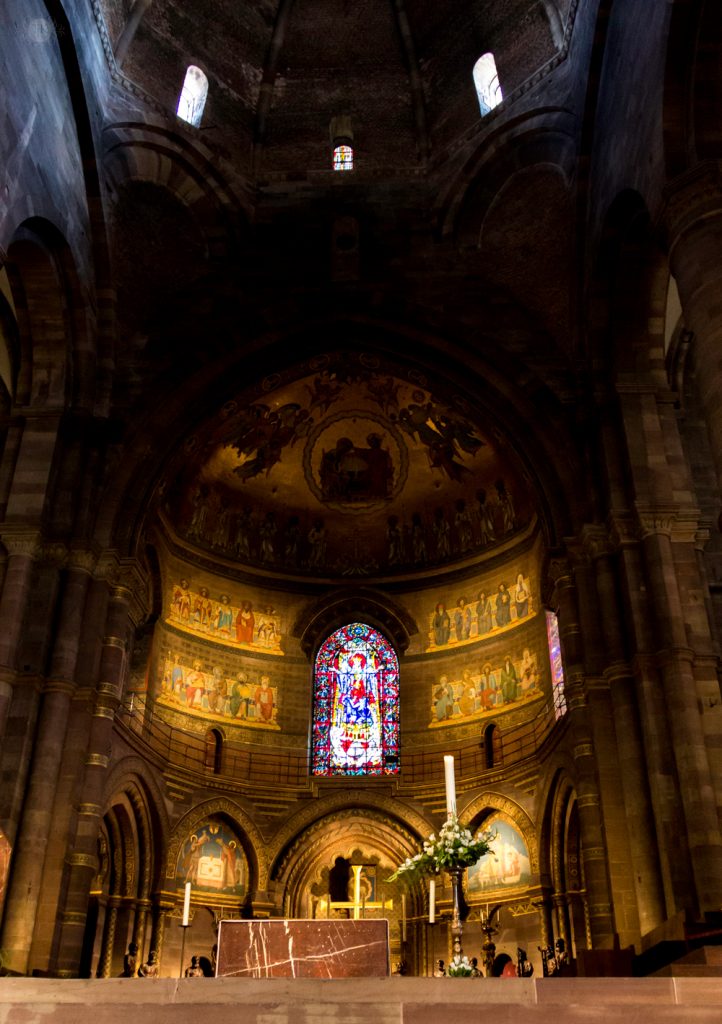
Like the Choir. It is where the Altar is located and it is elevated above the rest of the room because there is a crypt beneath it. And it also has that beautiful stained glass window featuring the Madonna and Child.
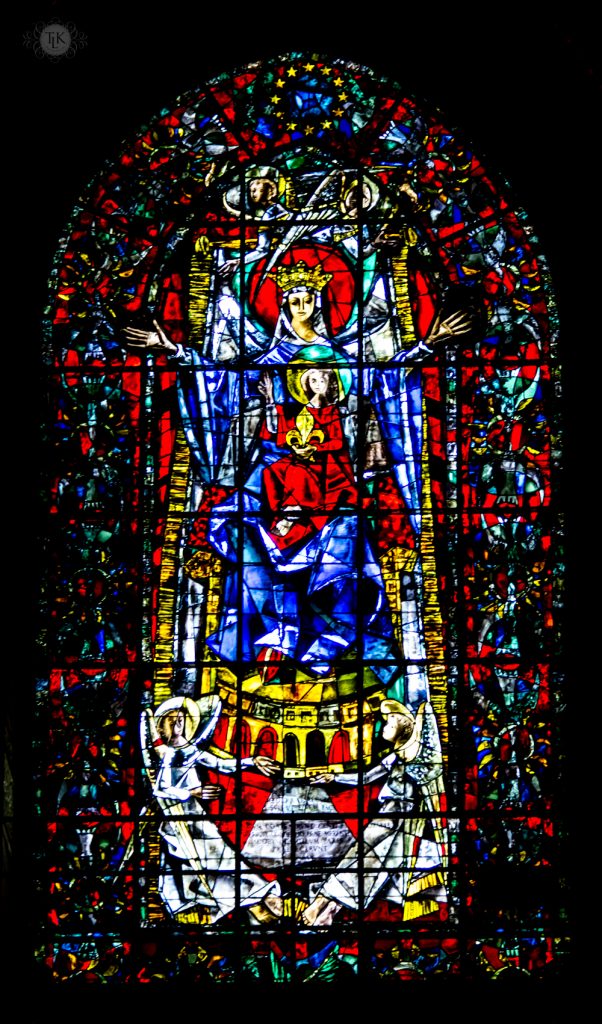
This is a newer window, given to the Cathedral by the Council of Europe in the fifties, after World War II and represents the Blessed Virgin.
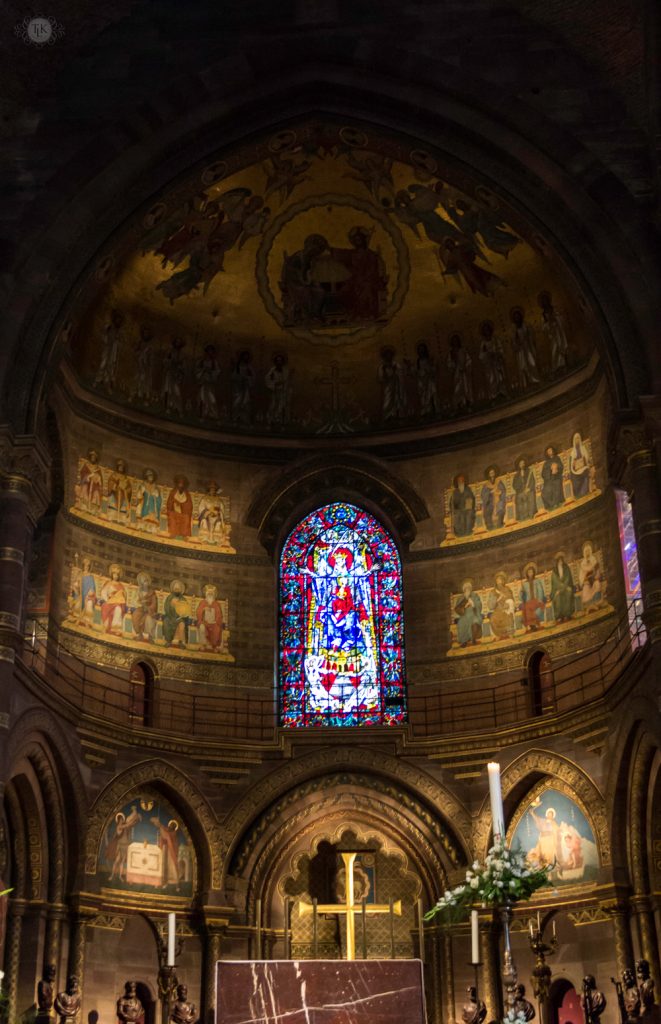
The frescos on the walls are from the nineteenth century and are copies of Byzantine Art.
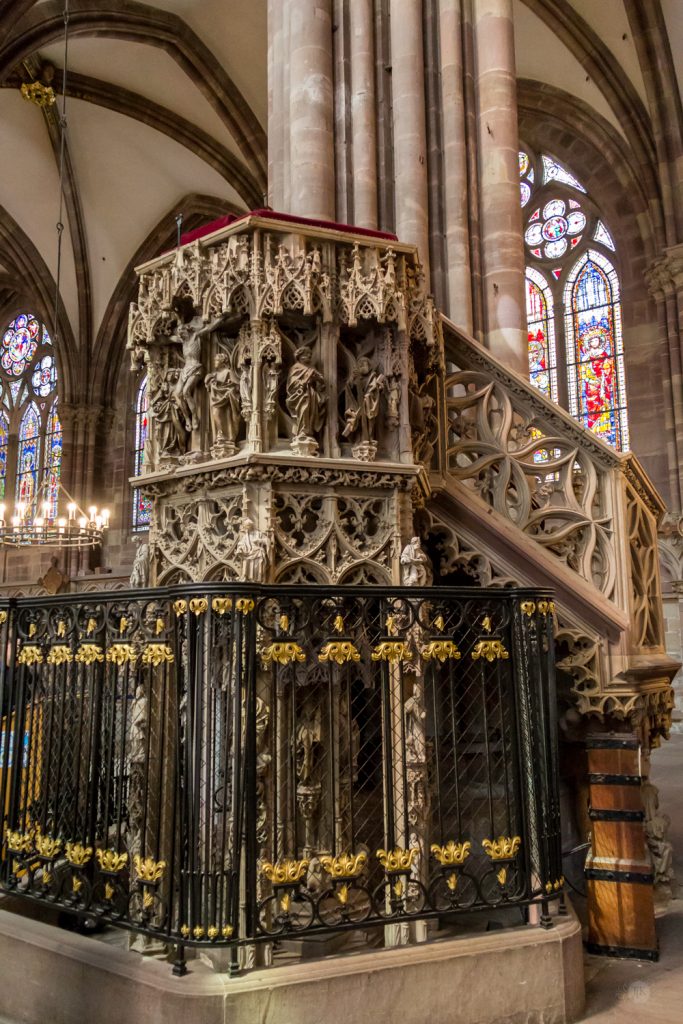
This is the pulpit. It is known as the Hammer Chair because it was built by Hans Hammer in 1485. It is very ornate – it has about fifty little statues on it, all representing more stories and history of the Bible and the life of Christ.
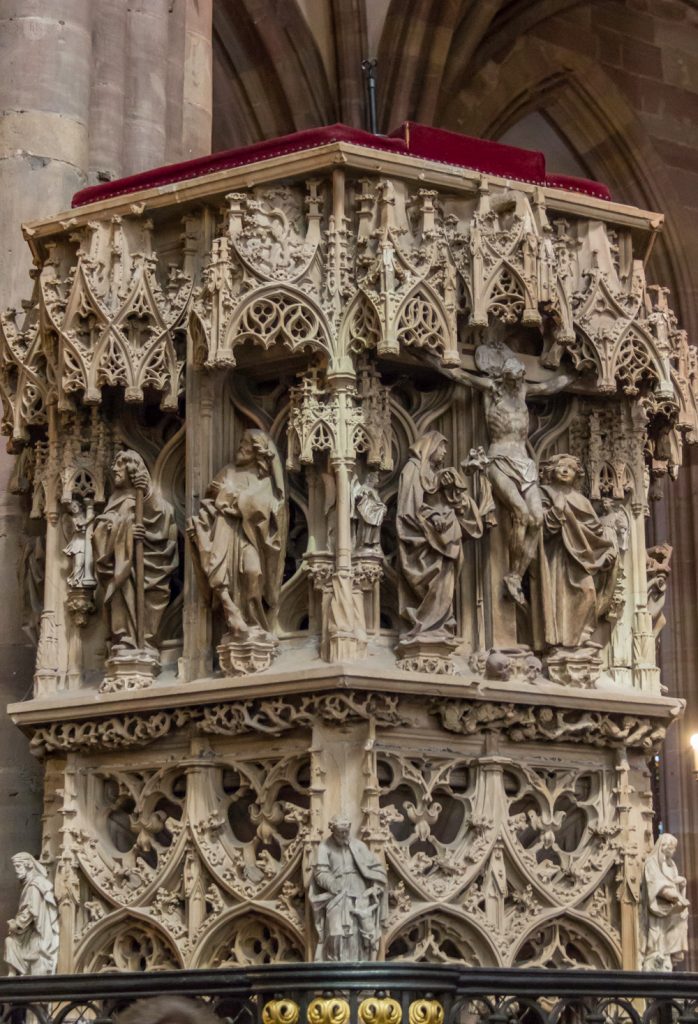
It has so much detail!
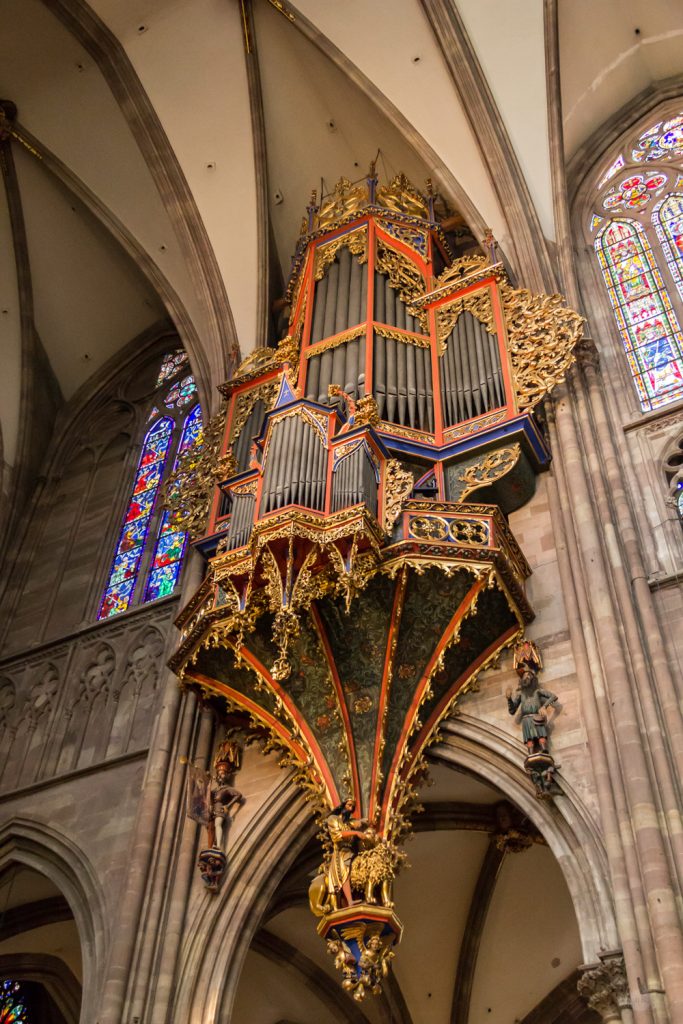
Another ornate item is the organ, or the Swallow’s Nest, located high on a wall above. It is called the Grand Organ, but it is not very big – as far as Cathedral organs go. The original organ dates to 1716 and had been rebuilt and restored throughout the years but retains much of the original detail.
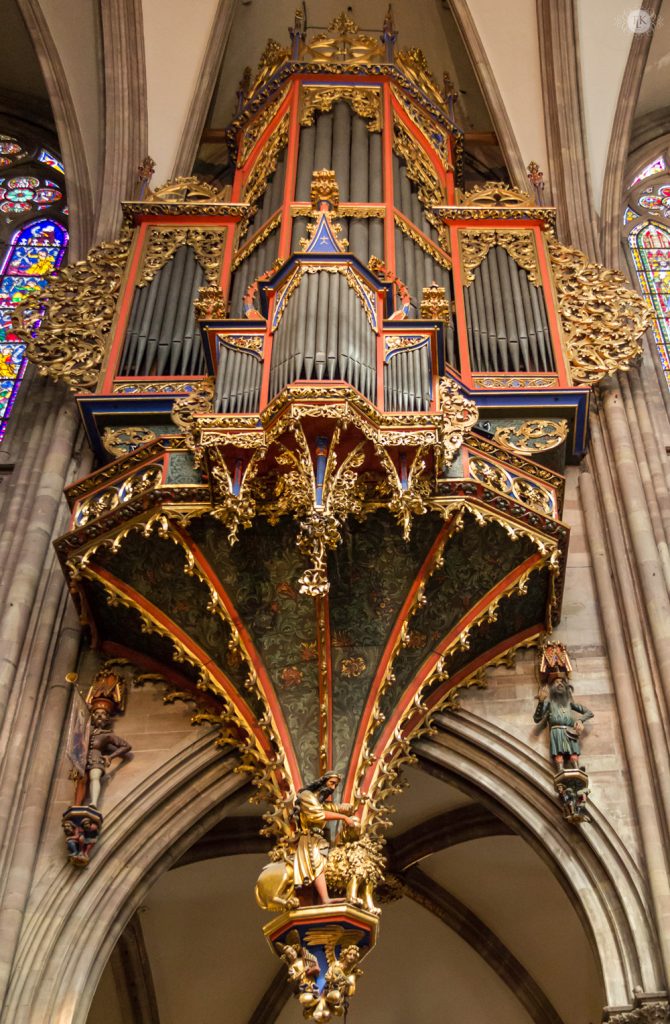
At the bottom of the organ is Samson and his Lion. And there are two puppets to the left and right which the organist would manipulate to keep church goers awake during long sermons. They were even used to mock the preacher at times.
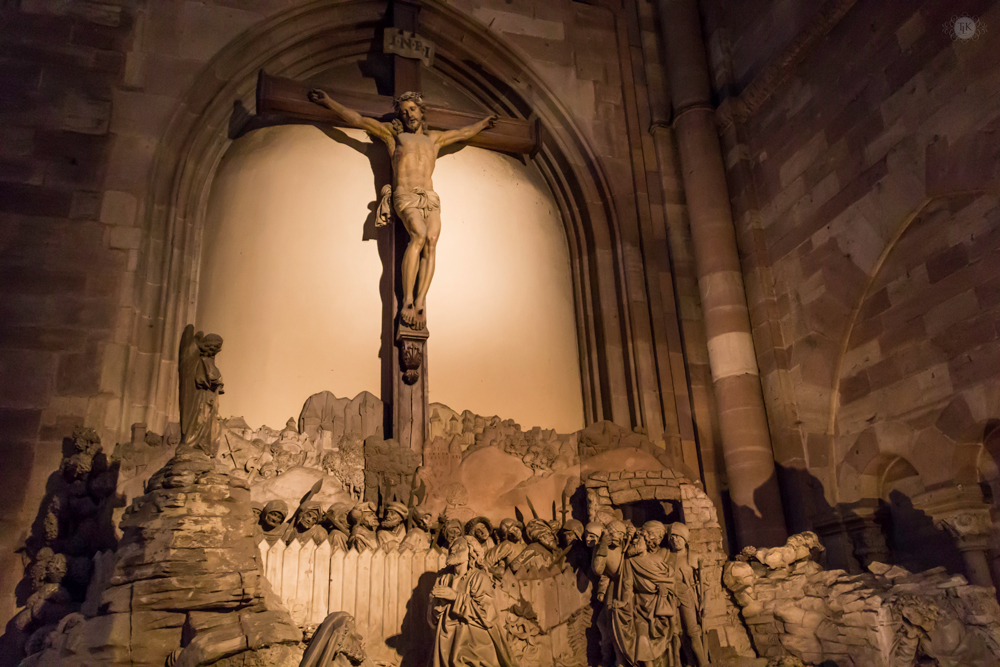
The Cathedral is a very large place. So large that it even has smaller areas with their own name, like the Chapel of Saint Laurent or the Saint Catherine Chapel. We didn’t have time to visit each one but in the Chapel of Saint Laurent we found this amazing sculpture of the Crucifixion of Christ on the Mount of Olives. It was originally commissioned in 1498 for another church and later moved here to the Cathedral in 1667.
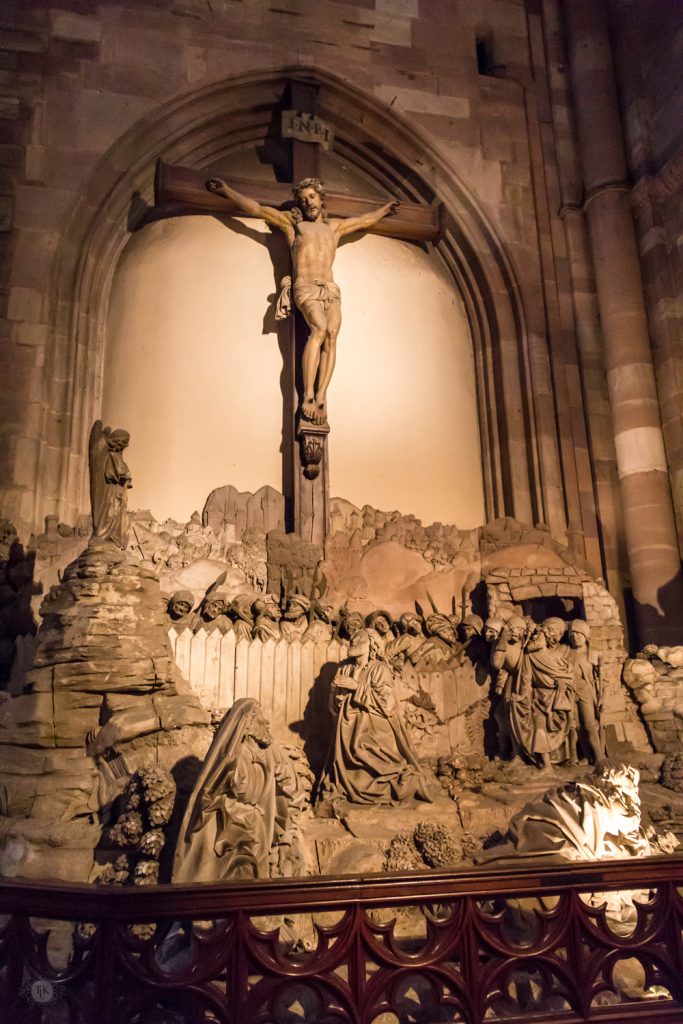
It has over thirty different figures depicting another portion of the Passion of Christ.
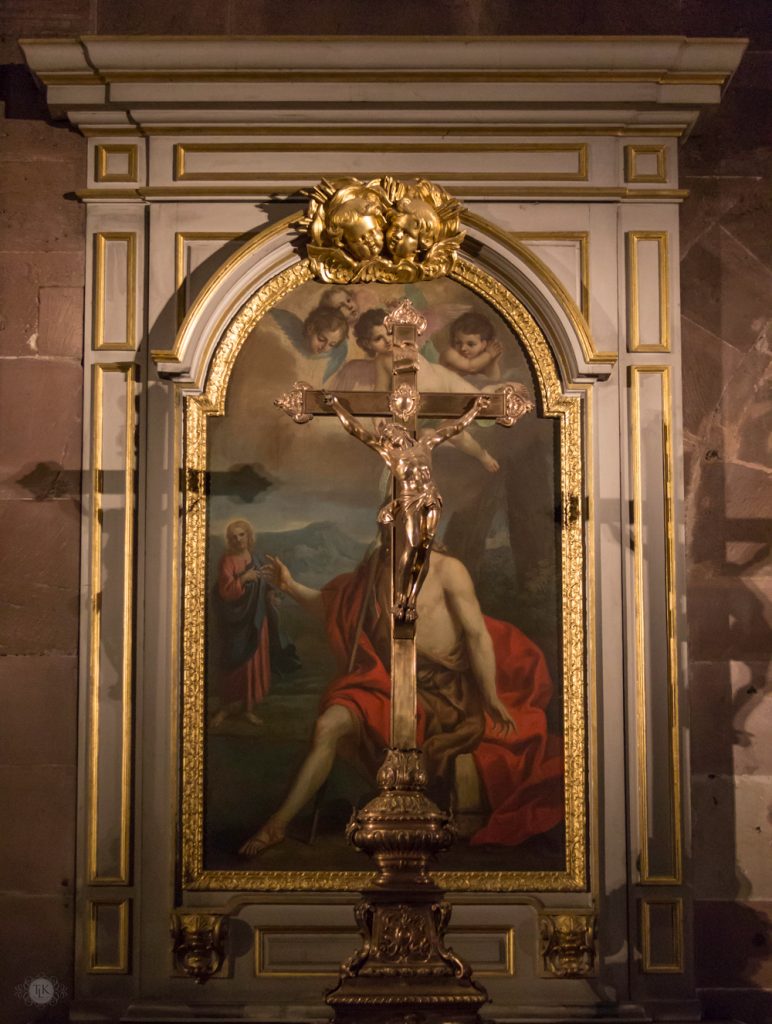
Beside that was a golden cross. There wasn’t any reference on it as to the importance of the relic or what it signified. In all of these large Cathedrals you find relics that would have drawn pilgrimages of the faithful to visit. The relics would be links either to Christ himself, the Saints or Martyrs and would be housed in smaller sections of the Cathedrals away from the Altar. Pilgrims would travel to see the different relics and many believed that touching them would provide healing or other blessings to the faithful.
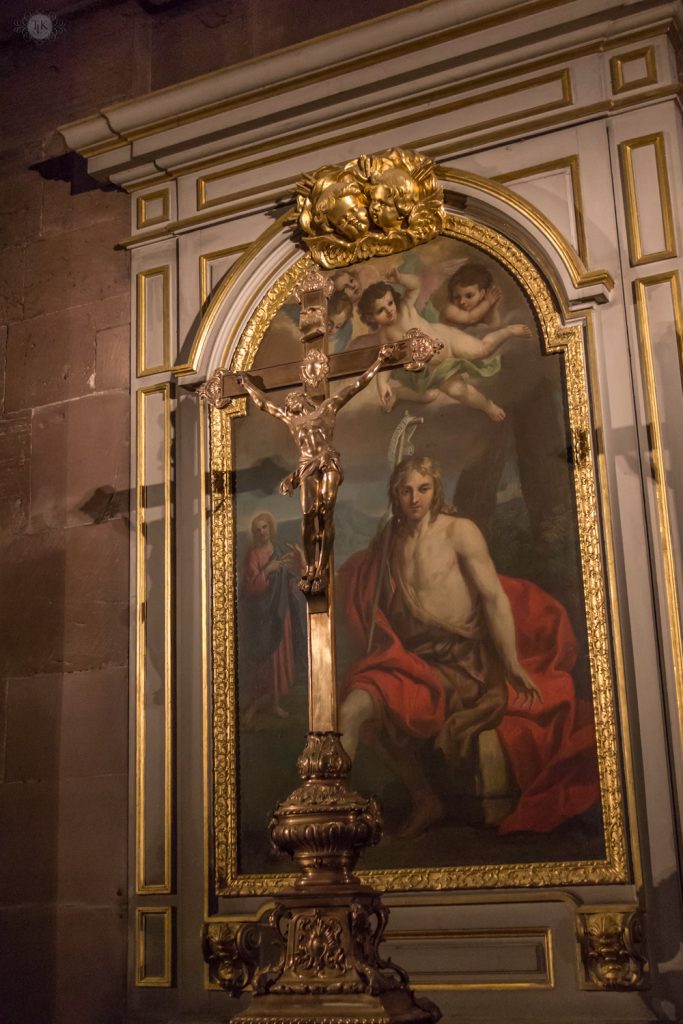
The cross was beautiful but so was that framed piece of art behind it. Those cherubs were amazing. I don’t know what the painting represented but possibly the cross and painting were part of a story known to those in Strasbourg. We were no longer wth our guide so any information we gained was on our own and unfortunately this cross and painting did not have any visible notations.
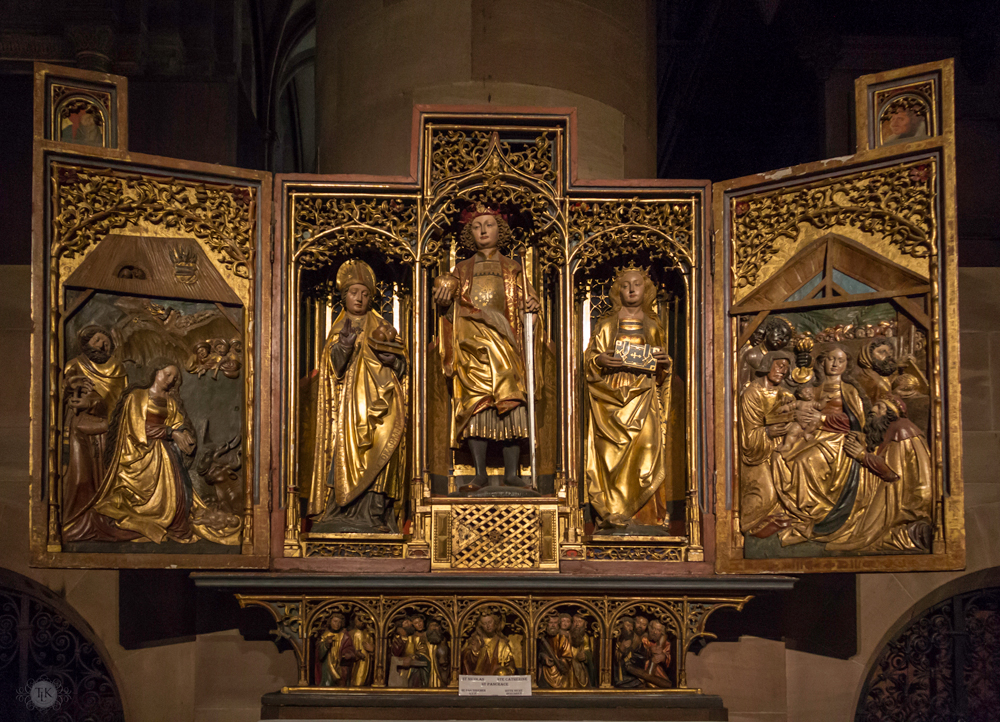
But this Altarpiece did. It is the Altarpiece of Saint Pancrace. It features Saint Pancrace, Saint Nicholas and Saint Catherine. Altarpieces are painted and sculpted panels that would be placed behind the Altar during services. They are considered Christian Art and were heavily used from the fifth century until the Catholic Reformation.
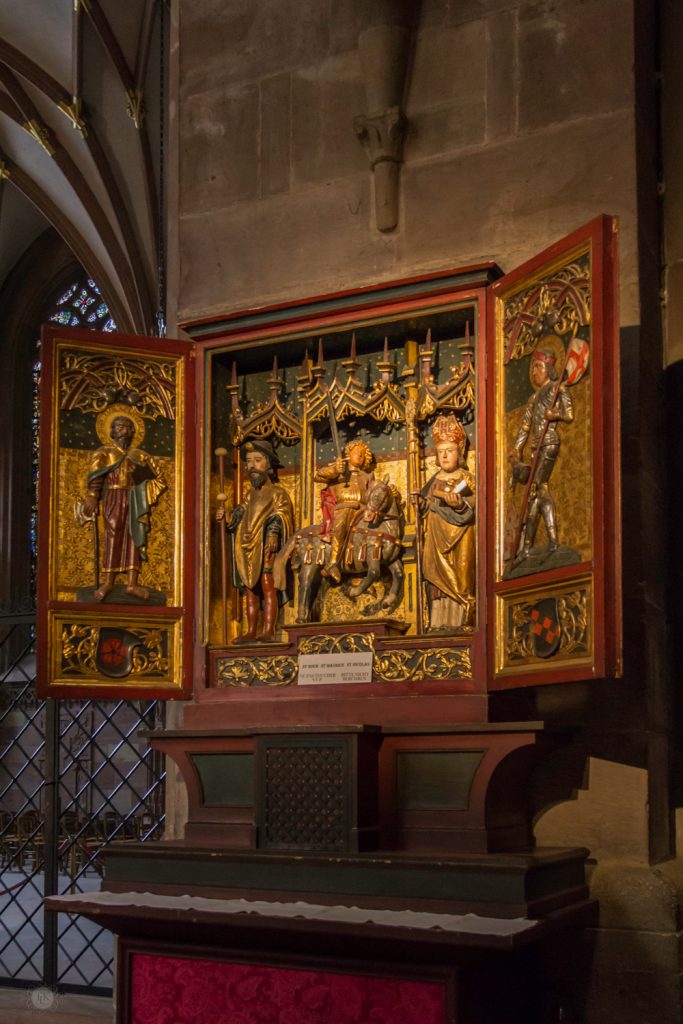
Here is another Altarpiece that we found – it is the Altarpiece of Saint Roch. It features what appears to be a knight in the center. As you may guess, the panels on the outside would close so that the Altarpiece could be protected. The outside panel doors were also painted so that even when closed it was a decorative piece of religious art.
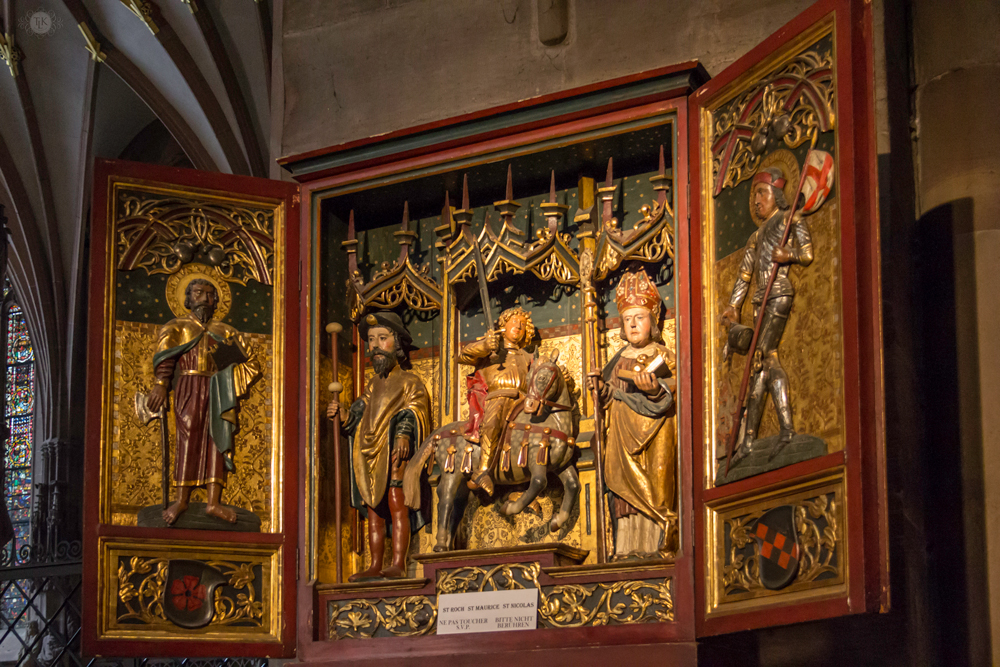
These two were amazing to see up close. They were covered in gilding like so many other beautiful things we saw inside the Cathedral. We could have spent several days inside but since we were only in Strasbourg for the day, we decided to head back out and see more of this amazing little section of the city.
This is not a sponsored post. This is my experience from my trip with Viking River Cruises. Email me to find out how you can save $100 when you book your first cruise with Viking through their referral program.
Leave a Reply